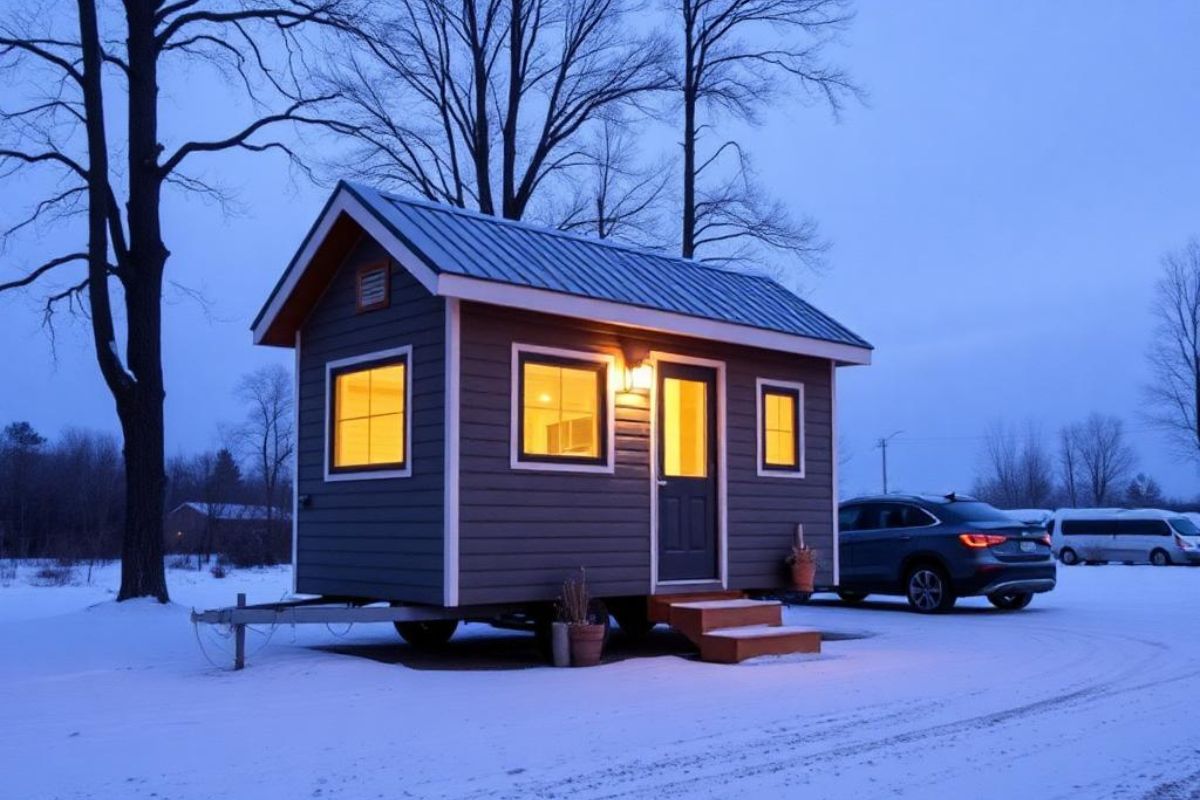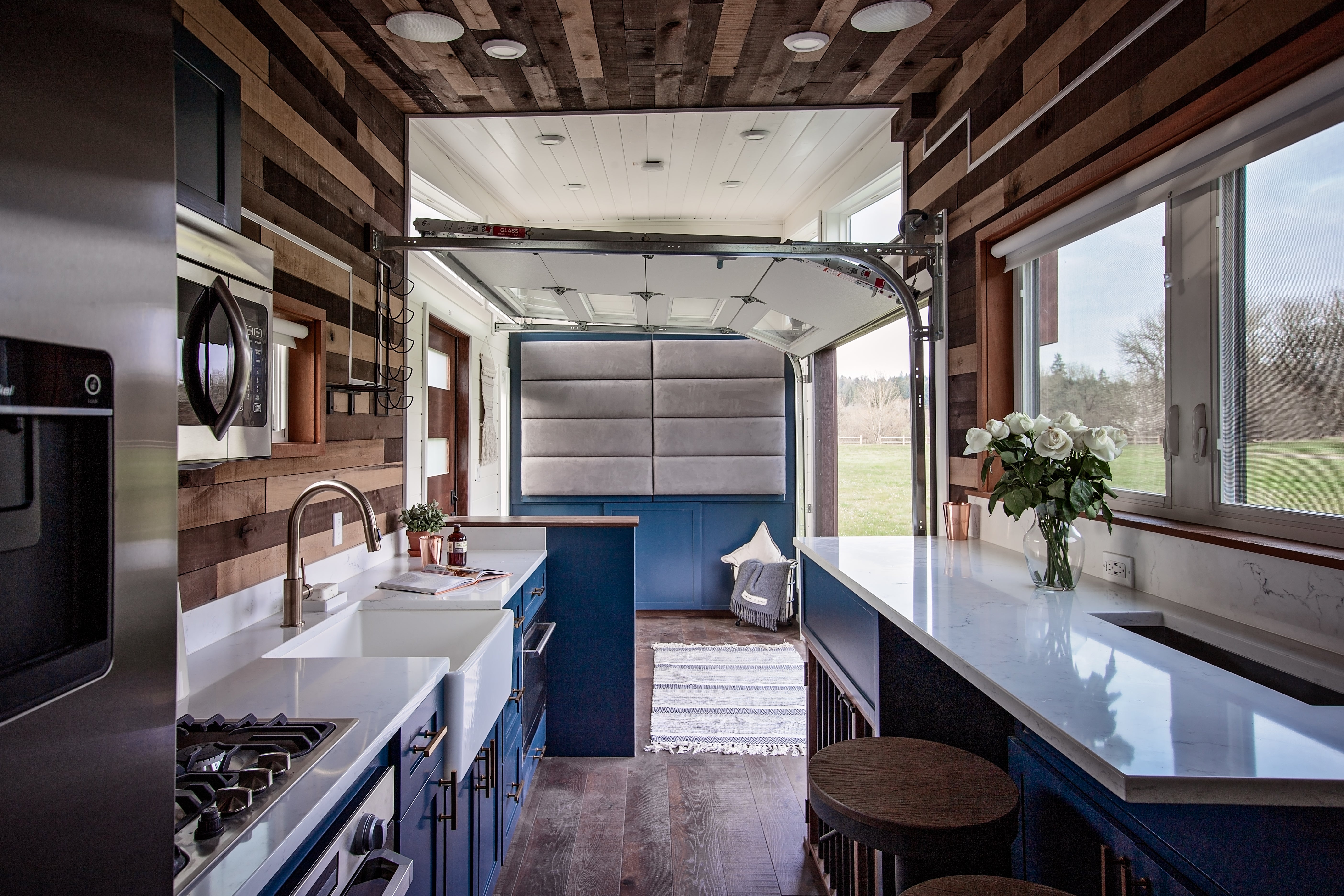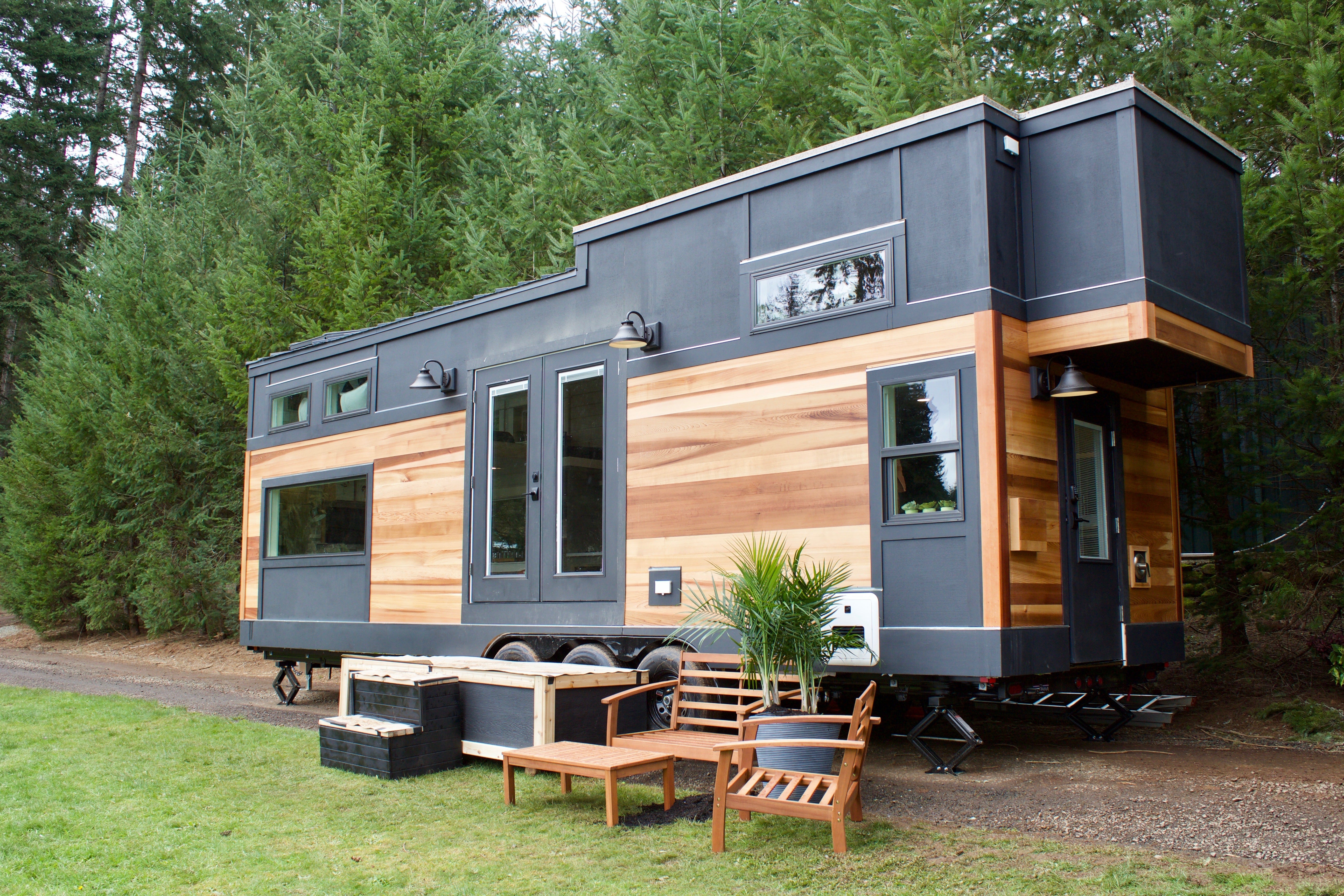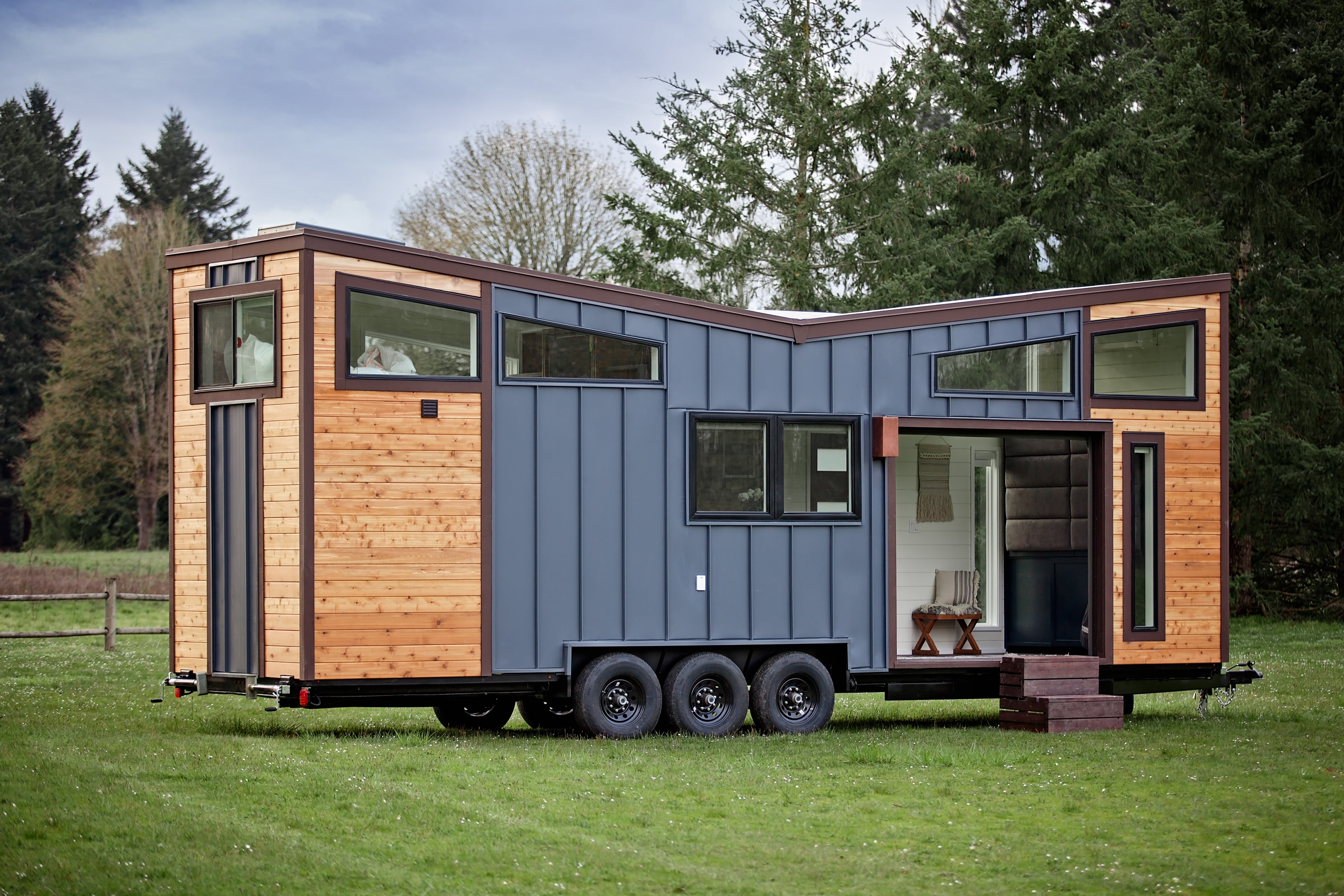Traveling with a tiny house on wheels lets you embrace freedom, but it requires meticulous planning and awareness of regulations. Start by choosing a compact, aerodynamic design with the right amenities and sturdy construction. Legal compliance is vital: verify RV classification, understand towing laws, and keep registration updated.
Plan routes using tools to avoid low bridges and weight limits, and choose campgrounds friendly to tiny homes. Pack essential tools like a tire pressure gauge and first-aid kit. Regular maintenance checks on tires and systems guarantee safety. Dive deeper into these aspects to navigate and enjoy your tiny home journeys seamlessly.
Key Takeaways
- Evaluate the tiny house's size, layout, and mobility features for efficient travel.
- Comply with state laws and ensure proper registration and insurance for your tiny home.
- Plan routes carefully, considering road access, weight restrictions, and suitable overnight stops.
- Pack essential tools and equipment for repairs, maintenance, and safety on the road.
- Regularly inspect and maintain the tiny home's exterior, interior, plumbing, and electrical systems.
Choosing the Right Tiny House
How do you decide which tiny house best suits your traveling lifestyle? Start by evaluating your needs and priorities. Consider the size and layout that accommodates your daily activities comfortably. If you love cooking, a well-equipped kitchen is fundamental. Think about the number of people or pets sharing the space; this determines the number of sleeping areas you'll need.
Next, examine mobility and towing requirements. Choose a tiny house designed for the road, with a durable chassis and lightweight materials. Make sure your vehicle can handle the weight to avoid unnecessary stress during travels. Look for features like aerodynamic designs to improve fuel efficiency and ease of towing.
Storage is essential for a traveling lifestyle. Opt for a design with smart storage solutions to maximize space without clutter. Built-in shelves, multifunctional furniture, and under-bed storage can help keep your belongings organized.
Finally, consider the climate and environments you'll encounter. Insulation and ventilation are important for comfort in varying conditions. Solar panels and water-saving fixtures add sustainability, allowing you to venture off-grid. By focusing on these practical aspects, you'll choose a tiny house that enhances your travel adventures.

Legal Considerations and Regulations
As you begin your journey with a tiny house on wheels, understanding the legal landscape is fundamental to confirm smooth travels. First, check your tiny home's classification. It's often considered an RV, which means it must comply with specific road and safety regulations. Verify your vehicle meets the Department of Transportation's standards, including weight and size limits.
Next, research state laws as they can vary greatly. Some states embrace tiny homes, while others have strict regulations. Know where you can park overnight and for extended stays. Certain areas have zoning laws that might restrict your options.
Registration and insurance are essential. Make sure your tiny house is registered properly, and explore insurance options that cover both dwelling and travel aspects. This will protect you in case of accidents or damages.
Don't forget about towing laws, which differ between states. Familiarize yourself with speed limits and braking requirements, especially when traversing through different jurisdictions.
Lastly, staying updated on tiny house regulations is critical. Laws can change, and staying informed guarantees you're always in compliance. Keep copies of relevant documents handy for quick reference during your travels.
Route Planning and Navigation
When planning your route with a tiny house on wheels, prioritize efficiency and safety to guarantee a stress-free journey. Begin by familiarizing yourself with the dimensions and weight of your tiny house, as this will affect the roads you can access. Use online mapping tools to check for low bridges, narrow roads, and weight restrictions. Tailor your route to avoid these obstacles and reduce unnecessary detours.
Consider your driving comfort and pace. Limit daily travel to a manageable distance, allowing for breaks and unexpected delays. It's wise to plan overnight stops at designated campgrounds or RV parks, ensuring they can accommodate your tiny house. Contact these locations in advance to confirm availability and suitability.
Stay updated on weather conditions and road closures, as they can greatly impact your travel plans. Use GPS systems that offer real-time traffic updates to help you navigate efficiently. However, always have a paper map as a backup in case technology fails.
Finally, share your itinerary with a friend or family member, providing an extra layer of safety. Remember, thorough route planning not only enhances safety but also enriches your overall travel experience.

Essential Tools and Equipment
With your route planned, it's important to equip your tiny house with the right tools and equipment for a smooth journey. Start by confirming you have a basic set of hand tools, including a hammer, screwdrivers, and pliers. They'll come in handy for minor repairs. A cordless drill can be a lifesaver for quick fixes, so don't leave it behind.
Next, consider a reliable toolkit specifically for your tiny house. Include a tire pressure gauge and air compressor, essential for maintaining proper tire pressure and guaranteeing safe travels. Don't forget spare fuses and light bulbs—small items, but vital if something goes out unexpectedly.
You'll need a water hose that's safe for drinking water and a water filter to provide clean water wherever you go. A surge protector will safeguard your electrical system from power fluctuations at campgrounds or RV parks.
Invest in a quality fire extinguisher and carbon monoxide detector for safety. Also, pack leveling blocks to stabilize your tiny house on uneven ground. Finally, a basic first-aid kit is a must for handling minor injuries on the road. With these tools and equipment, you'll be well-prepared for your adventure.
Finding Ideal Parking Spots
Finding ideal parking spots for your tiny house on wheels often requires a mix of research and creativity. Begin by exploring local regulations in your target area, as zoning laws vary and can impact where you can legally park. Websites and apps like Park4Night or iOverlander can provide valuable insights from fellow travelers.
Consider reaching out to RV parks or campgrounds, as they often accommodate tiny houses and offer amenities like water and electricity hookups. Some even provide long-term parking options, perfect for extended stays. Don't overlook private land opportunities; landowners may rent space for your tiny house, giving you both security and a unique living experience.
When considering urban areas, look for neighborhoods with flexible parking rules. Urban boondocking might be an option, but always prioritize safety and respect local residents. Additionally, attending tiny house festivals or gatherings can connect you with communities that welcome mobile dwellers.
Lastly, think about seasonality. Some spots may be accessible year-round, while others might be seasonal due to weather conditions. Planning ahead guarantees you've got a cozy place to park, no matter where your journey takes you.

Maintaining Your Tiny Home on the Road
Keeping your tiny home in top shape while traveling demands regular attention and proactive care. Start by checking your home's exterior before every journey. Inspect tires for wear and verify they're properly inflated. Examine the hitch and connections for any signs of damage or rust. A quick walk-around can catch potential issues early, saving you from costly repairs.
Inside, focus on balance and security. Secure loose items to prevent them from shifting during transit. Check cabinets and storage areas to verify they're latched. This not only protects your belongings but also maintains the integrity of your tiny house's structure.
Don't overlook essential systems like plumbing and electricity. Regularly inspect hoses for leaks and verify connections are tight. Test your smoke and carbon monoxide detectors monthly to guarantee they work properly. Keep a toolkit handy for minor repairs and adjustments on the go.
Lastly, stay organized with a maintenance schedule. Document when you perform checks and services. This proactive approach helps you anticipate needs and extend your tiny home's lifespan. By dedicating time to upkeep, you'll enjoy a smoother, worry-free travel experience in your tiny house on wheels.
Conclusion
Traveling with a tiny house on wheels offers freedom and adventure, but it requires careful planning. Choose the right tiny home that fits your needs and be aware of legal considerations. Plan your routes meticulously and equip yourself with essential tools for the journey.
Finding ideal parking spots can enhance your experience, while regular maintenance guarantees your home remains comfortable on the road. Embrace the lifestyle, stay informed, and enjoy the unique journey ahead.






Share: